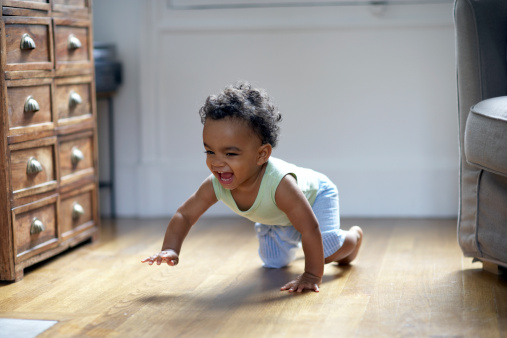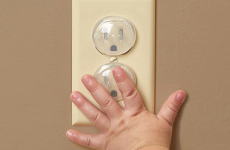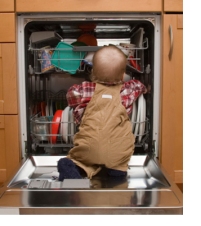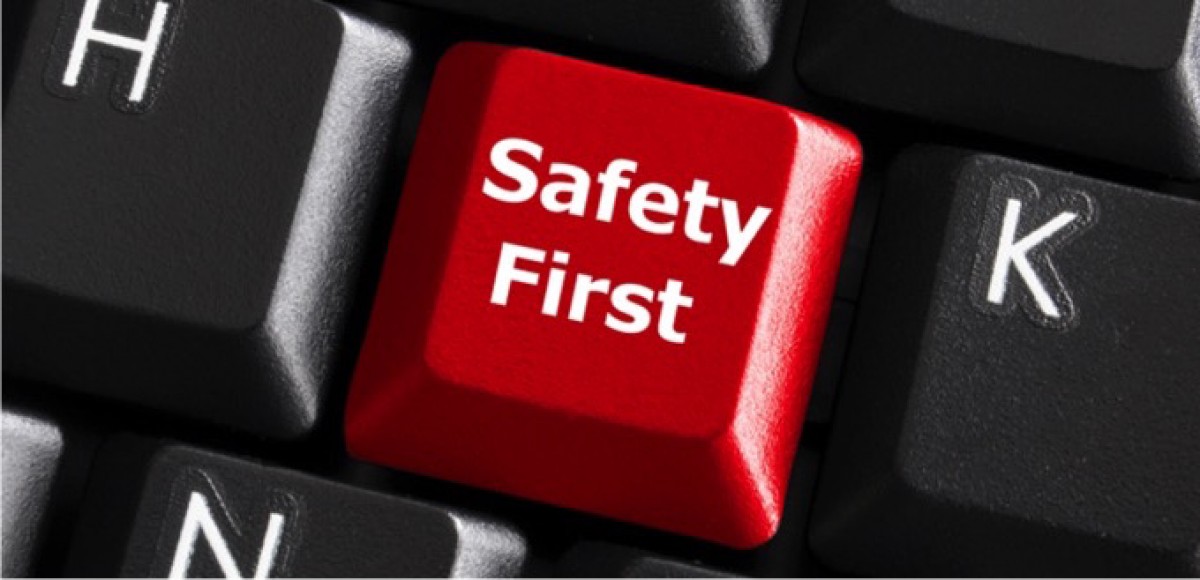When we hear the term “child proof” it seems to exclude babies. Once your little one is able to crawl, it’s time to be sure your home is 100% baby and child proof.
According to KidsHealth.org an average of 35% of children’s deaths and injuries in the U.S. occur at home for children 3 years old and under.
Current statistics reveal suffocation as the leading cause of death for small children while drowning is very close as the second leading cause. These are just two of many preventable deaths and injuries that account for these statistics.
It is always best to be armed with knowledge in the event of any health emergency, so we begin by recommending you receive First Aid, CPR and AED training to assist infants as well as adults. (You can learn more about available training here). But we’d also like to offer some simple safety tips you can begin immediately in your home to eliminate any unsafe circumstances:
- Do not leave standing water in your bathtub or sink. News reports have shown us, infants have incredible climbing abilities and can easily get to these places before you have a chance to notice. (Never leave a child in a bath without an adult present.)
- Never leave a child unattended near a swimming pool. This means pay close attention and do not be distracted by your cell phone, chatting with a friend or anything that has you looking away from your child longer than 5 seconds.
- Cover your hot tub at all times when it is not in use. Otherwise, treat it as you would the items listed above because any standing water – even the smallest amount – is enough to drown a person of any age under ce circumstances.
- Toxic substances should be completely inaccessible to anyone who is not and adult. They can be a catch all phrase for anything from cleaning supplies to medicines to cooking supplies. In fact, some things that aren’t toxic to adults can be toxic to small children (and pets). The best way to block easy access is, of course, cabinet locks. Though there are many cabinet locks available on the market, studies have shown not all have been reliable. For a list of the top rated Child Proof Cabinet Locks of 2016 click here.
- Keep your purse, brief case, or any baggage you use out of reach. Your baggage is generally filled with chocking hazards, toxic items, sharp items and much more. The cap of an ink pen can easily be swallowed while an ink pen itself can result in the loss of an eye.
- Always use electrical outlet covers. Electrical outlets are well known to be appealing to small children. They want to
 touch them or stick items inside of them which can leak to shock, electrocution or even a house fire. Electrical outlet covers are cheap and easy to find and install. You can find them at just about any department store, hardware store or online.
touch them or stick items inside of them which can leak to shock, electrocution or even a house fire. Electrical outlet covers are cheap and easy to find and install. You can find them at just about any department store, hardware store or online. - Keep your tool chest and tool shed locked any time it is not in use and when in use, do not allow children to be present. Children are curious and relate to touch and actions. Your tools will appear as enticing as toys to them but are obviously extremely dangerous in the hands of children.
- Prevent trip and fall hazards by keeping all electrical cords against baseboards, under carpets or inside walls. Make sure all rugs are completely flat and not curling up at any edges. Block staircases with child and baby gates. (The top 5 gates available are listed here.) Make sure open windows have screen protection and open doors are blocked by gates as well.
- ANY item small enough for a child to grab and put into his/her mouth is a choke hazard. Choking hazards are pretty much any item a baby can grab and put into his/her mouth. This can range from coins, or rings, or candy, or pen caps and so on. Also, sometimes things that aren’t on the loose can be choke hazards – for instance, plastic eyes on a stuffed animal can be ripped off and swallowed or buttons on coat. It’s a lot to consider, but you have to be constantly mindful to prevent exposure of these things to a small child or baby.
- Consider serious dangers such as heavy items on shelves or tables that can be pulled down by a child. For instance, one of the largest causes of children’s injuries is the child pulling a television cord or stand causing the television to topple over on top of him/her.
- Be mindful of sharp furniture corners that can also cause injuries to roaming babies who are trying to maneuver around the home. They may grab hold of a table to lift themselves, only to catch their eye on a sharp corner resulting in injury. Furniture edge corner guards are sold at most department stores, home furnishing stores and online.
- Cordless window covers prevent strangulation. Both pets and small children have accidentally gotten caught in the hanging cords of blinds before resulting in death. If you currently have cords hanging from your window treatments or blinds, tie them up high and out of reach of children (and pets).
- Be aware of burn hazards. Burns happen faster that you realize. A child can easily approach the stove, oven or BBQ Grill while you’re busy handling the food. Even if the item is not currently in use, it is likely still hot from when you had it turned on. As a parent, you may be juggling many things trying to cook and manage your child at the same time. While you’re cooking, however, it is one of the most dangerous times to juggle. A child can crawl under you while you’re holding a pot of boiling water, for example. If at all possible, keep children away from cooking areas but in view while you cook or have someone assist you with attending to both at the same time.
- Cover your knobs!! This means door knobs, oven controller knobs, and any knobs you
 can to prevent your child escaping, going where he/she shouldn’t, or turning on a dangerous appliance. Knob covers are another item that’s easily available to you via shopping at any hardware store, baby supplies store or online.
can to prevent your child escaping, going where he/she shouldn’t, or turning on a dangerous appliance. Knob covers are another item that’s easily available to you via shopping at any hardware store, baby supplies store or online. - If you own a firearms, keep it locked away! Even the smallest of children can accidentally get a hold of and shoot a gun. We’ve all heard the horror stories of a child accidentally shooting him/herself or a sibling. Please read our previous blog about gun safety at home to learn how to prevent such a tragedy.
There are several tips to prevent your child from suffocating while sleeping and the safest ways to put your child to bed. Specialists advise it is safer to sleep without your baby in the bed with you, even though it seems like the best way to protect your child for many reasons it is not. However, if you follow these guidelines it will help your baby to remain safe. For more tips on cribs that prevent injury and how to put your child safely to be without hazards, click here.
While this seems like a lot of reading, the truth is we’ve only scratched the surface. Being a parent is a very detailed but rewarding responsibility. It can be challenging at times, especially if you are a first time parent. We hope this information is helpful to you but we also urge you to learn more about what you can do to protect your child on the National Safety Council’s Website here.
Be sure to subscribe to our blog for safety tips that can help you and your family and remember, “an ounce of prevention is worth a pound of cure”.



